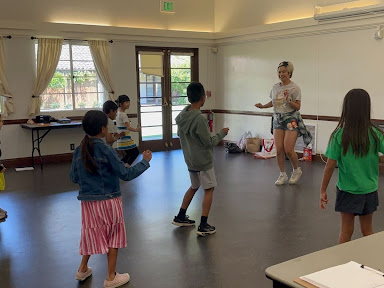Arts Marketing Attending Theatre
How Childcare Programs Boost Theatre Attendance
Jason Engleman | Last updated: September 29, 2025
For parents of young children, a night at the theatre often feels like a logistical puzzle. It’s not just the cost of tickets; it’s also arranging (and paying for) childcare, adjusting schedules around bedtime, and worrying about whether it’s worth the hassle. For many, the easiest option is simply to stay home.
This reality creates a huge challenge for theatre companies: how do you engage parents in their 20s, 30s, and 40s—the very demographics you need for long-term audience sustainability—when childcare is such a major barrier?
The good news is that a handful of innovative theatre organizations have started addressing this problem head-on. Their message is simple but powerful: if we want “butts in seats,” we need to make theatre attendance possible for parents by offering accessible, affordable, and creative childcare solutions.

How Theatres Are Tackling the Childcare Barrier
There’s no one-size-fits-all approach to making theatre accessible for parents. Across the country, theatres are experimenting with creative models to reduce the childcare burden, each with unique benefits depending on their resources and community needs.
1. Onsite Care Rooms
Some companies provide supervised spaces right next to the theatre where kids can play while parents watch the show. Utah’s Tuacahn Amphitheatre created its “ShowCare” program, offering safe, affordable onsite care for children up to age seven. For parents, the convenience of dropping kids off at the theatre door removes a huge barrier.
2. Childcare Matinees
Others schedule specific performances where childcare is provided. In New York, Playwrights Realm partnered with PAAL to host a “childcare matinee” of Mothers. Children as young as three months could be dropped off at a professional childcare space at New 42 Studios while their parents attended the show. The performance sold out, with many parents citing the childcare option as the deciding factor in buying tickets.
3. Partnerships with Childcare Providers
Broadway’s Here Lies Love took another approach, working with PAAL to provide free childcare during select performances. Parents could drop off their children in a safe, supervised space while enjoying the show—no extra fee required. This kind of collaboration allows theatres to focus on the production while experienced professionals handle the childcare side.
4. Arts Education Programs
Some companies are reimagining childcare not just as a service, but as a mission-aligned opportunity to engage the next generation of theatre lovers. Instead of offering simple babysitting, they create structured theatre classes or workshops for kids during performances. This model doubles as childcare and arts education, giving children a meaningful experience of their own while parents enjoy the show.
These approaches align with what research has been saying for years: lack of childcare is a major barrier to arts attendance.
- A 2015 National Endowment for the Arts report found that “time” and “logistics” (including family responsibilities) were among the top reasons adults skipped performances, even when they were interested.
- A 2025 Drexel University study confirmed that childcare falls into the “practical barriers” category. Even highly motivated parents may decline to attend if childcare feels unaffordable, stressful, or unavailable.
The bottom line is clear: for many parents, the issue isn’t lack of interest in theatre. It’s the absence of a support system that makes attendance feasible.
From Childcare to Arts Education: Palo Alto Players’ Approach
One of the most exciting recent case studies comes from Palo Alto Players, a regional theatre in Silicon Valley. In 2024, they piloted their “Parents Play Date” program during a performance of Misery, and then expanded it in 2025 for Sweat.
The program was simple but powerful: children ages 5–12 could attend a free theatre class next door, staffed by vetted teaching artists, while their parents enjoyed the performance. All parents had to do was purchase a ticket—no additional childcare fees.
“As a parent myself, it really struck a chord with me,” says Elizabeth Santana, Managing Director at Palo Alto Players. “We designed Play Date as a class rather than childcare because we thought it would be more fun for the kids and also to give our local actors, many of whom are amazing teaching artists, the chance to share their skills.”

Elizabeth Santana, Managing Director at Palo Alto Players
The age range was intentional.
“We chose this age range 5–12 because these children are typically independent enough to participate in a structured group activity like the theatre class we were offering,” Santana explains. “Younger children often require more individualized attention and something more closely aligned with childcare, which wasn’t our intention.”
Participation is increasing as the program gains visibility. While Misery only had 5 kids, Sweat saw participation double to 10 kids.
And crucially, it wasn’t just the kids who were thrilled.
“Several parents told us directly that the program was the reason they decided to purchase tickets,” Santana notes. “Parents have appreciated the opportunity to be able to see a show and have asked if we could make this a regular offering, and many of the kids asked when they could come back again!”
Palo Alto Players now plans to make Parents Play Date a recurring part of its season. The program isn’t just helping parents in the moment—it’s building a foundation for future theatre lovers.
“Our hope is that by introducing young people to theatre in a playful, supportive environment, we are planting seeds for future audience members or even performers,” says Santana.

A glimpse into the theatre classes offered for children aged 5-12 as part of the “Parents Play Date” program
Childcare Is Audience Development
Theatres across the U.S. are competing for attention in a crowded entertainment landscape. Parents of young children represent a significant—and often untapped—audience segment. But unless theatres address childcare as a barrier, that audience will remain on the sidelines.
The examples from Broadway, Tuacahn, Playwrights Realm, and Palo Alto Players demonstrate that solutions are possible across scales and budgets. Some cost money; some require partnerships; some require a shift in how we think about “audience engagement”. But all of them are worth exploring.
For theatres: Ask yourself—how many tickets are you losing each season because parents simply can’t make it work? Could offering childcare or a family-friendly initiative bring those patrons back?
For parents: Don’t be afraid to ask your local theatre companies whether they offer childcare options. Your advocacy could spark change.
Because in the end, the message is simple: if we want theatre to thrive, we need to make it accessible to the people who want to be there. That means giving parents the freedom to enjoy a night at the theatre—without worrying about what’s happening at home.
Originally Published: September 29, 2025
Last Updated: September 29, 2025
Blog Written By:
More From Arts Marketing
Welcome to StageAgent
Our mission is to provide actors, directors, teachers and backstage staff with the ultimate theatre research and education platform.
Enjoy amazing theatre resources:
Browse Blog Categories
Auditions and jobs
near
{{headerProps.location}}
Upcoming performances

